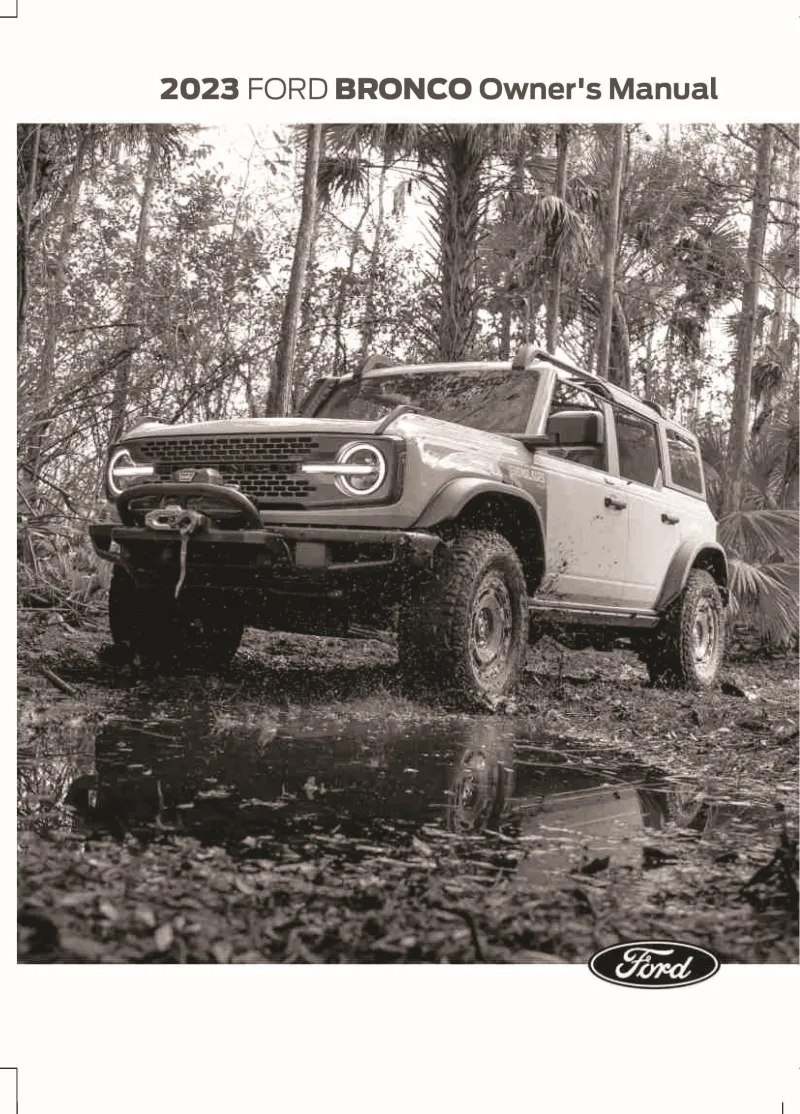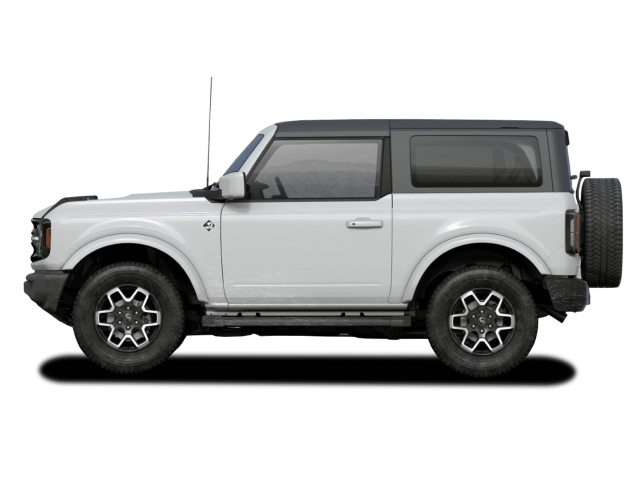2023 Ford Bronco Owner's Manual

Table of Contents
2023 Ford Bronco Overview
Introduction
The 2023 Ford Bronco marks a triumphant return for this iconic off-road SUV, combining rugged design with cutting-edge technology. This model pays homage to its heritage while delivering modern performance and versatility, making it an ideal choice for both adventurers and everyday drivers. With striking aesthetics and a robust build, the Bronco stands out whether navigating treacherous trails or cruising through urban streets.
Powertrains
The 2023 Ford Bronco offers a range of powerful and efficient powertrains designed to tackle any terrain. The base model features a turbocharged 2.3-liter four-cylinder engine that produces 270 horsepower and 310 lb-ft of torque, while an optional 2.7-liter V6 engine ups the ante with 310 horsepower and 400 lb-ft of torque. Both powertrains are paired with a 7-speed manual or a 10-speed automatic transmission, providing seamless shifts and enhanced control. The Bronco also boasts advanced four-wheel-drive capabilities, ensuring it can conquer any challenge, from muddy trails to rocky paths.
Trims
The 2023 Bronco comes in several thoughtfully designed trim levels, including the Base, Big Bend, Outer Banks, Badlands, and the luxurious First Edition. Each trim offers a unique set of features, allowing customers to choose the perfect configuration for their needs. Adventurers may prefer the Badlands for its off-road enhancements, while urban dwellers might opt for the Outer Banks, offering a blend of style and comfort.
Features
This model is equipped with an array of cutting-edge features, from an intuitive SYNC® infotainment system with a large touchscreen display to advanced driver-assistance technologies. The Bronco's durable interior is designed for easy cleaning, and options like removable doors and roof further enhance the open-air experience. Additionally, the optional GOAT (Goes Over Any Terrain) driving modes provide tailored performance for various driving conditions.
Owners Manual
The 2023 Ford Bronco owners manual is a comprehensive resource for new owners, detailing everything from operational guides to maintenance schedules. The manual provides valuable insights into all features and technologies, ensuring owners can make the most of their Bronco experience. It's an essential tool that empowers drivers to confidently navigate and enjoy their rugged SUV to the fullest.
User manual download
The Ford Bronco owner manual for the 2023 model year is to be found in PDF downloadable format on this page. The owner manual for the model year 2023 is free and in English, but the repair manuals are usually not easy to get and may cost more.
Manual Questions
Fill the form below and someone will help you!

